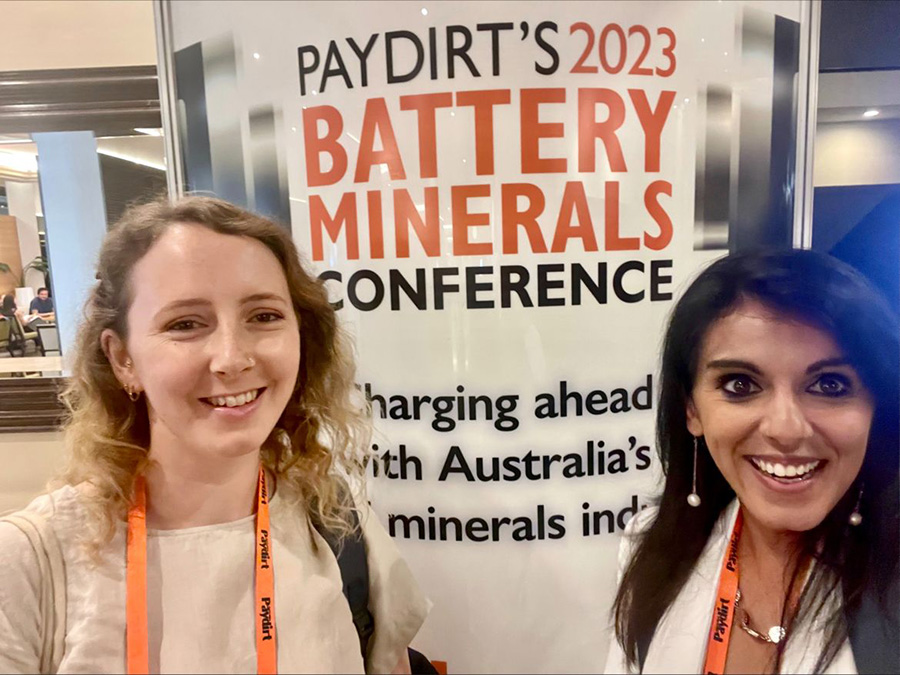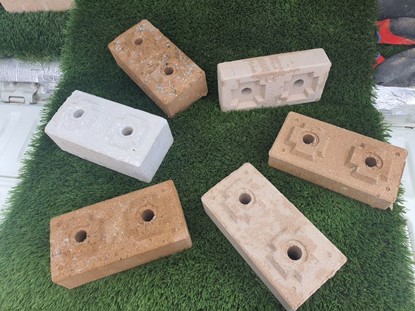MIWATCH strike pay dirt at the Battery Minerals conference
Associate Professor Anita Parbhakar-Fox gives a wrap up of her time at the Paydirt 2023 Battery Minerals conference, 21–23 March 2023.
Visiting Western Australia, Rosie Blannin and I had the opportunity to attend Paydirt’s 2023 Battery Minerals Conference in Perth, in which we also happened to have a nice to catch up with Dianne Dowdell from SMI’s Centre for Social Responsibility in Mining.

This event, touted as the premier forum for miners and explorers developing the essential ingredients driving the Industrial Revolution 4.0., was attended by over 200 delegates.
A major focus of this conference was undoubtedly on lithium, a stronghold of the Western Australia mining sector with its value chain alone predicted to be $1.3 trillion sector by 2025.
Other metals showcased included nickel, graphite, cobalt, copper, manganese, tin, vanadium and rare earths, the demand for which is expected to more than double by 2030 thanks to the global transition towards a low-carbon economy. In addition to representatives from the mining and METS sector, government delegations from countries including Indonesia, UK and Brazil also attended, looking to make new connections and build lasting partnerships for the future.
On invitation from the Critical Minerals Association Australia, we met with the Innovation UK Delegation who were on a mission to explore collaborative UK/Australia opportunities relating to critical materials for electrification. The conference highlighted the agility of junior mining companies to think differently about their waste, for example in a panel session, in response to a question I put forward about how mine waste is being considered in the context of ESG credentials several juniors described the waste reduction practices (i.e., identifying reuse options for all mined materials) that are being considered for their new projects.
Other presentations also highlighted a pivot towards biohydrometallurgical processing for metal recovery, and indeed MIWATCH bumped into old friend Blake Stacey of Mobile Crisis Construction, where we discussed opportunities for collaboration, particularly to transform spent heap leach, oxide, or desulphurised tailings into bricks. MIWATCH will certainly be digging through their sample archives to send materials for testing!

There is a huge opportunity to tap into Western Australia’s mine waste, as is being undertaken by MIWATCH in the other states. There are reported to be around 700 TSFs with potential for critical minerals (including Ga, Ge, REEs, In, Mn, Bi, Te, Hf, Ta, Zr) with 109 TSFs with potential for carbon capture and storage by mineral carbonation. MIWATCH are looking to establish a mine waste characterisation program titled ‘from valorisation to sequestration’ and already have support from The University of Queensland and SMI’s new cross-cutting program Resourcing Decarbonisation.
If you are interested to learn more about this research opportunity, please contact Associate Professor Anita Parbhakar-Fox.

